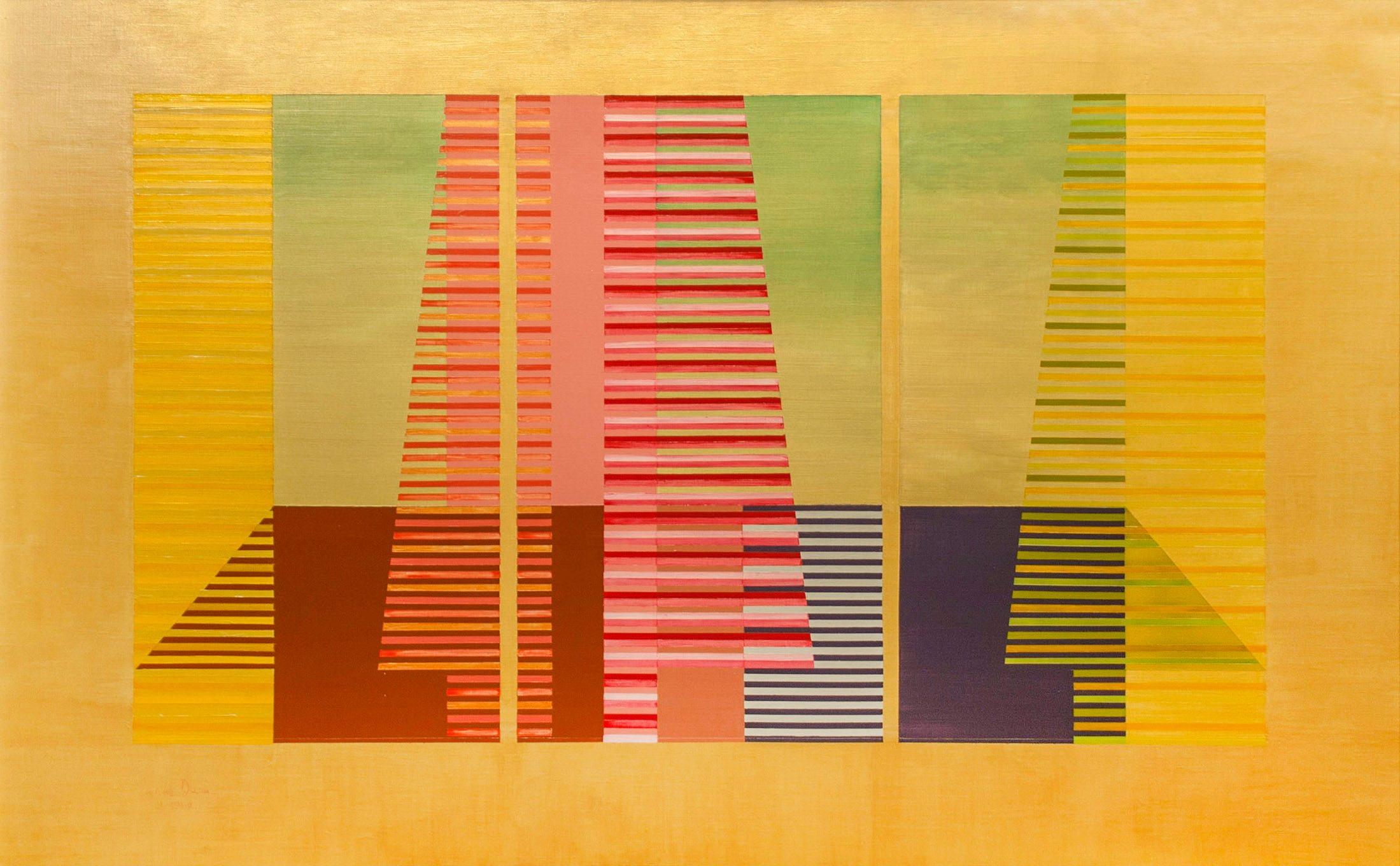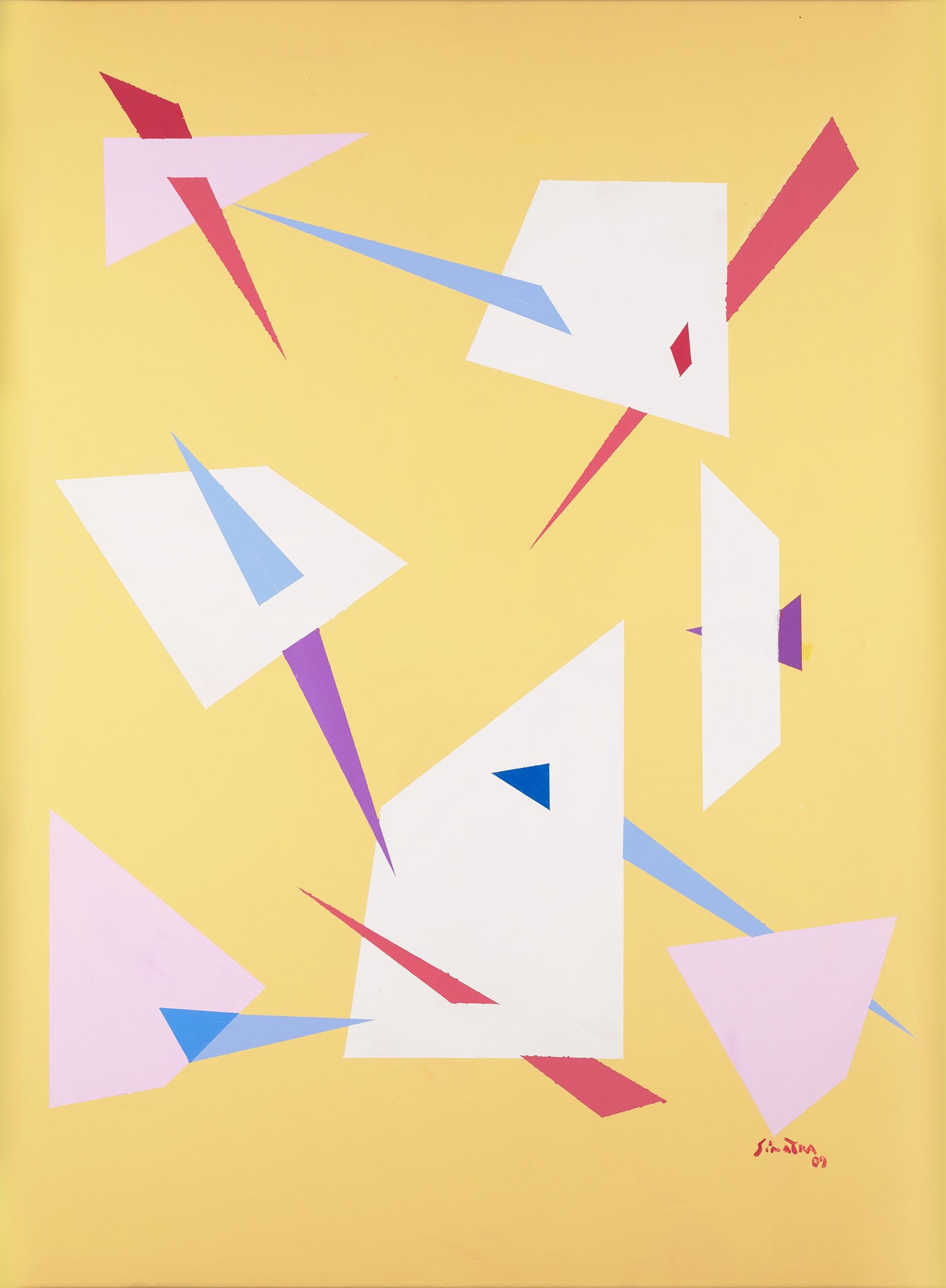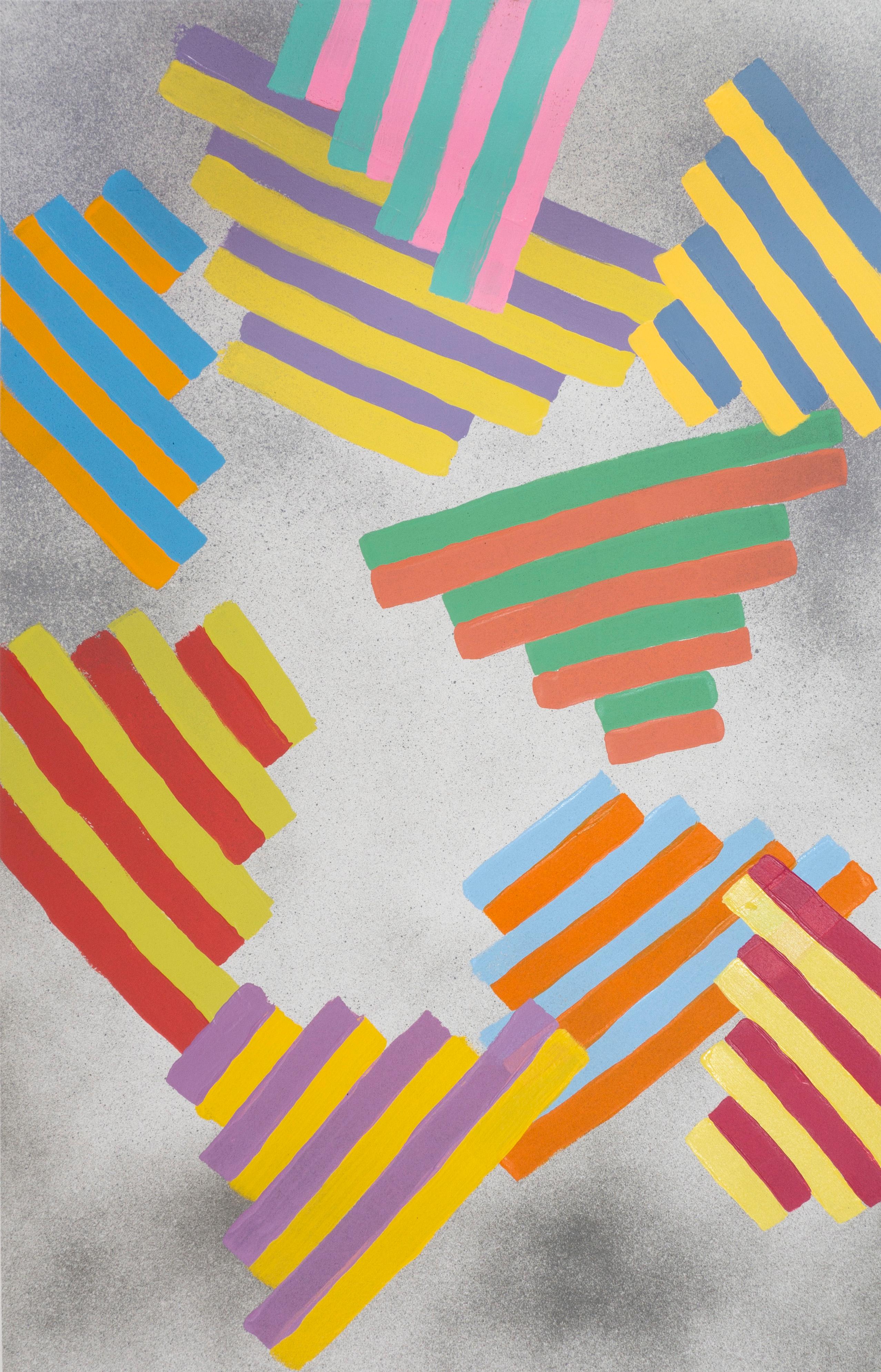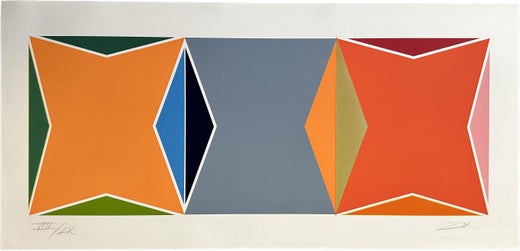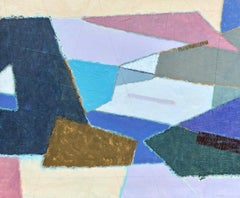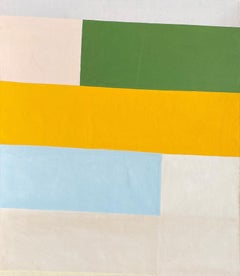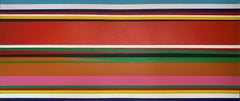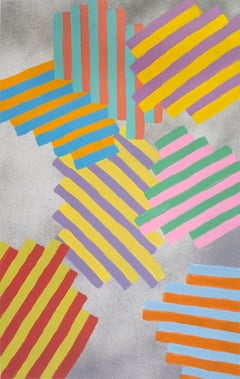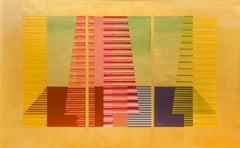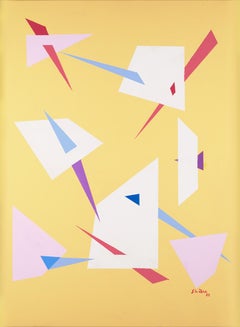Larry Zox
Jean Jean, 1964
Signed, dated, and titled on the stretcher
Liquitex on canvas
58 x 62 inches
Provenance:
Solomon & Co., New York
Private Collection, NJ
Estate of the above, 2023
Committed to abstraction throughout his career, Larry Zox played a central role in the Color Field discourse of the 1960s and 1970s. His work of the time, consisting of brilliantly colored geometric shapes in dynamic juxtapositions, demonstrated that hard-edge painting was neither cold nor formalistic. He reused certain motifs, but he did so less to explore their aspects than to “get at the specific character and quality of each painting in and for itself,” as James Monte stated in his essay for Zox’s solo exhibition at the Whitney Museum of American Art in 1973. By the 1970s, Zox was using a freer, more emotive method, while maintaining the autonomy of color, which increasingly became more important to him than structure in his late years.
Zox began to receive attention in the 1960s, when he was included in several groundbreaking exhibitions of Color Field and Minimalist art, including Shape and Structure (1965), organized by Henry Geldzahler for the Gallery of Modern Art, New York, and Systemic Painting (1966), organized by Lawrence Alloway for the Guggenheim Museum. In 1973, the Whitney’s solo exhibition of Zox’s work gave recognition to his significance in the art scene of the preceding decade. In the following year, Zox was represented in the inaugural exhibition of the Hirshhorn Museum, which owns fourteen of his works.
Zox was born in Des Moines, Iowa. He attended the University of Oklahoma and Drake University. While studying at the Des Moines Art Center, he was mentored by George Grosz, who despite his own figurative approach encouraged Zox’s forays into abstraction. In 1958, Zox moved to New York, joining the downtown art scene. His studio on 20th Street became a gathering place for artists, jazz musicians, bikers, and boxers. He occasionally sparred with the visiting fighters. He later established a studio in East Hampton, where he painted and fished including using a helicopter to spot fish.
In the 1950s and early 1960s, Zox’s works were collages consisting of painted pieces of paper stapled onto sheets of plywood. He then produced paintings that were illusions of collages, including both torn- and trued-edged forms, to which he added a wide range of intense hues that created ambiguous surfaces. Next, he omitted the collage aspect of his work and applied flat color areas to create more complete statements of pure color and shape.
From 1962 to 1965, he produced his Rotation Series, at first creating plywood and Plexiglas reliefs, which turned squares into dynamic polygons. He used these shapes in his paintings as well, employing white as a foil between colors to produce negative spaces that suggest that the colored shapes had only been cut out and laid down instead of painted. The New York Times noted in 1964: “The artist is hip, cool, adventurous, not content to stay with the mere exercise of sensibility that one sees in smaller works.”
In 1965, he began the Scissors Jack Series in which he arranged opposing triangular shapes with inverted Vs of bare canvas at their centers that threaten to split their compositions apart. The Diamond Cut and Diamond Drill paintings followed. In these, Zox used regularized formats as a means of revealing how color can change our perception of shape. In a single work he often combined industrial epoxy paints with acrylic to set up tensions between colors that would not exist otherwise. At the time, Peter Schjeldahl observed in The New York Times: Zox “is one painter who shows an ability to play by the rules without cramping at all an essentially romantic and exuberant sensibility.” His art of the period was equated with that of Frank Stella and Kenneth Noland.
In the late 1960s, Zox’s paintings, such as in his Gemini Series, became brushier and he often incorporated powdered mica into his paints to increase their visual effect. In the early 1970s, he explored a variety of new means of applying paint, including squeegees and other large tools. With these means, he moved away from preconception, while introducing a drawing procedure in which the outside limits of a painting were determined by cutting or cropping the canvas.
Zox’s work is included in many important public collections. In addition to the Hirshhorn, it belongs to the Museum of Modern Art, New York; the Whitney Museum of American Art, New York; the Metropolitan Museum of Art New York; the Guggenheim Museum, New York; the Tate Modern, London; the Neues Museum, Bremen, Germany; the Museum of Fine Arts, Boston; the Fogg Art Museum, Harvard University, Cambridge, Massachusetts; the Museum of Fine Arts, Houston; the Dallas Museum of Fine Arts; and many others.

